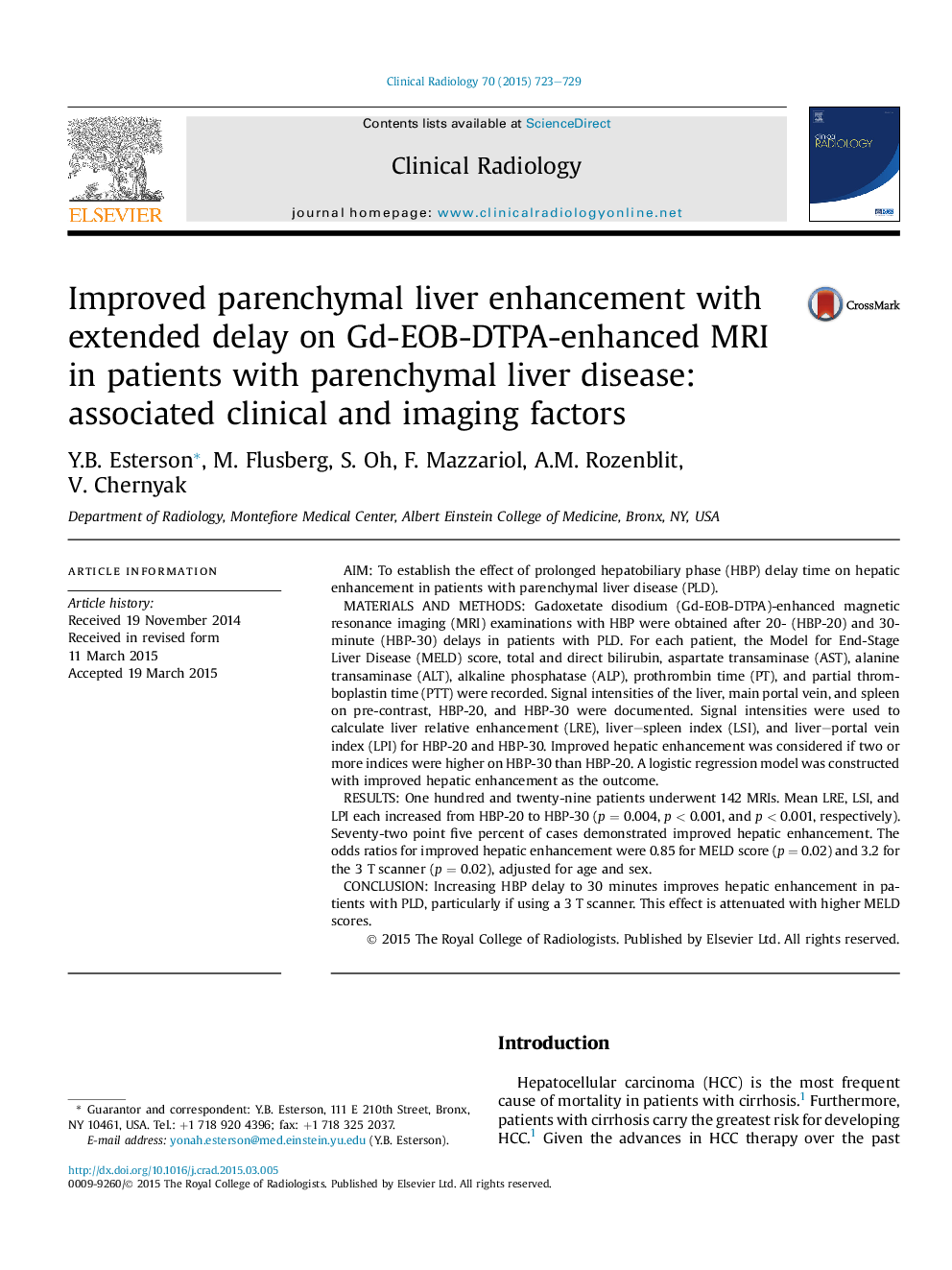| Article ID | Journal | Published Year | Pages | File Type |
|---|---|---|---|---|
| 6190843 | Clinical Radiology | 2015 | 7 Pages |
â¢Increasing hepatobiliary phase delay improves hepatic enhancement in liver disease.â¢This effect is enhanced if using a 3T scanner.â¢This effect is attenuated with higher MELD scores.
AimTo establish the effect of prolonged hepatobiliary phase (HBP) delay time on hepatic enhancement in patients with parenchymal liver disease (PLD).Materials and methodsGadoxetate disodium (Gd-EOB-DTPA)-enhanced magnetic resonance imaging (MRI) examinations with HBP were obtained after 20- (HBP-20) and 30-minute (HBP-30) delays in patients with PLD. For each patient, the Model for End-Stage Liver Disease (MELD) score, total and direct bilirubin, aspartate transaminase (AST), alanine transaminase (ALT), alkaline phosphatase (ALP), prothrombin time (PT), and partial thromboplastin time (PTT) were recorded. Signal intensities of the liver, main portal vein, and spleen on pre-contrast, HBP-20, and HBP-30 were documented. Signal intensities were used to calculate liver relative enhancement (LRE), liver-spleen index (LSI), and liver-portal vein index (LPI) for HBP-20 and HBP-30. Improved hepatic enhancement was considered if two or more indices were higher on HBP-30 than HBP-20. A logistic regression model was constructed with improved hepatic enhancement as the outcome.ResultsOne hundred and twenty-nine patients underwent 142 MRIs. Mean LRE, LSI, and LPI each increased from HBP-20 to HBP-30 (p = 0.004, p < 0.001, and p < 0.001, respectively). Seventy-two point five percent of cases demonstrated improved hepatic enhancement. The odds ratios for improved hepatic enhancement were 0.85 for MELD score (p = 0.02) and 3.2 for the 3 T scanner (p = 0.02), adjusted for age and sex.ConclusionIncreasing HBP delay to 30 minutes improves hepatic enhancement in patients with PLD, particularly if using a 3 T scanner. This effect is attenuated with higher MELD scores.
